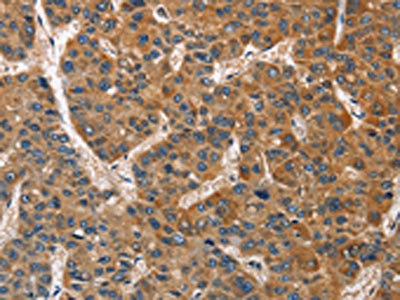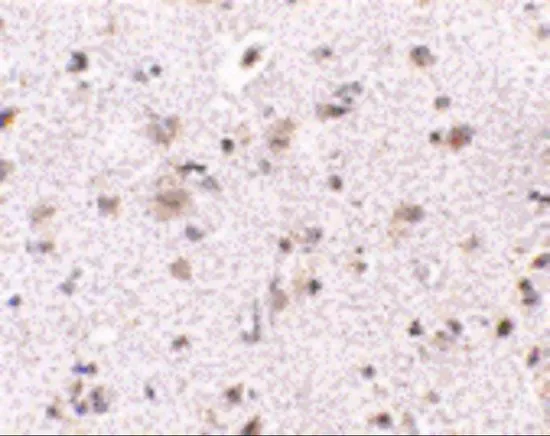BRCC45 antibody
GTX105364
ApplicationsImmunoFluorescence, ImmunoPrecipitation, Western Blot, ImmunoCytoChemistry
Product group Antibodies
TargetBABAM2
Overview
- SupplierGeneTex
- Product NameBRCC45 antibody
- Delivery Days Customer9
- Application Supplier NoteWB: 1:500-1:3000. ICC/IF: 1:100-1:1000. IP: 1:100-1:500. *Optimal dilutions/concentrations should be determined by the researcher.Not tested in other applications.
- ApplicationsImmunoFluorescence, ImmunoPrecipitation, Western Blot, ImmunoCytoChemistry
- CertificationResearch Use Only
- ClonalityPolyclonal
- Concentration1 mg/ml
- ConjugateUnconjugated
- Gene ID9577
- Target nameBABAM2
- Target descriptionBRISC and BRCA1 A complex member 2
- Target synonymsbrain and reproductive organ-expressed (TNFRSF1A modulator); brain and reproductive organ-expressed protein; BRCA1/BRCA2-containing complex subunit 45; BRCA1/BRCA2-containing complex, subunit 4; BRCA1-A complex subunit BRE; BRCC4; BRCC45; BRE; BRISC and BRCA1-A complex member 2
- HostRabbit
- IsotypeIgG
- Protein IDQ9NXR7
- Protein NameBRISC and BRCA1-A complex member 2
- Scientific DescriptionComponent of the BRCA1-A complex, a complex that specifically recognizes Lys-63-linked ubiquitinated histones H2A and H2AX at DNA lesions sites, leading to target the BRCA1-BARD1 heterodimer to sites of DNA damage at double-strand breaks (DSBs). The BRCA1-A complex also possesses deubiquitinase activity that specifically removes Lys-63-linked ubiquitin on histones H2A and H2AX. In the BRCA1-A complex, it acts as an adapter that bridges the interaction between MERIT40/NBA1 and the rest of the complex, thereby being required for the complex integrity and modulating the E3 ubiquitin ligase activity of the BRCA1-BARD1 heterodimer. Probably also plays a role as a component of the BRISC complex, a multiprotein complex that specifically cleaves Lys-63-linked ubiquitin. May play a role in homeostasis or cellular differentiation in cells of neural, epithelial and germline origins. May also act as a death receptor-associated anti-apoptotic protein, which inhibits the mitochondrial apoptotic pathway. May regulate TNF-alpha signaling through its interactions with TNFRSF1A; however these effects may be indirect.
- Storage Instruction-20°C or -80°C,2°C to 8°C
- UNSPSC12352203







